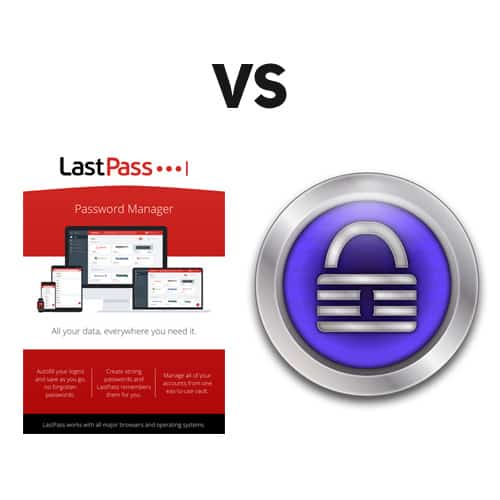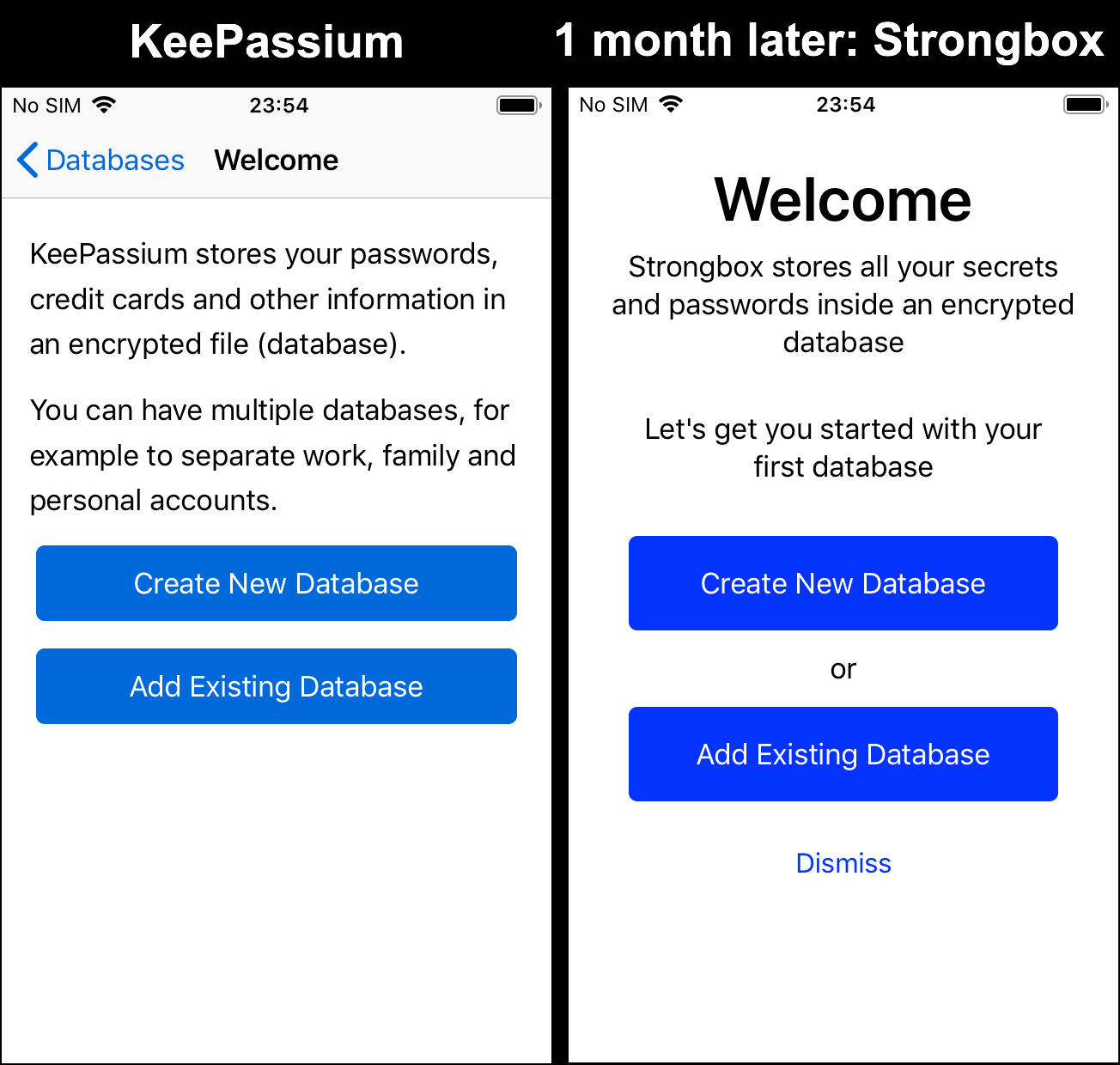

KeePass is distributed under the terms of the GNU General Public License v2.
#Keepass 1 vs 2 windows#
So it should run on all Windows operating systems without installation of any additional library.

NET Framework is not required, nor are any other special DLLs. It has been developed using Microsoft Visual C++ with MFC classes. Examples for groups are "Windows", "Network", "Internet" and "Homebanking", but you can freely add and delete groups.

KeePass supports groups, into which you can sort your entries. This database consists of only one file, so it can be transferred from one computer to another easily, and backups are easy to create. The program stores your passwords in a highly encrypted database.
#Keepass 1 vs 2 password#
With this tool, you only need to remember one single, strong master password and/or carry a key file with you (more about this below). KeePass is a free, open source, light-weight and easy-to-use password manager. Unimaginable.īut who can remember all those passwords? Nobody, but KeePass can. He would have access to your e-mail account, website, etc. Also, you should use a different password for each account, because if you use only one password everywhere and someone gets this password, you have a problem. You need a password for the Windows network logon, your e-mail account, your website's FTP password, online passwords (like CodeProject member account), and so on. Nowadays you need to remember many passwords. Note: if you like this project, don't forget to vote for it!
#Keepass 1 vs 2 code#
Download KeePass 1.41 source code - 1.90 MB.Download KeePass 1.41 executable - 1.53 MB.Action codes and placeholders are not case sensitive. Beyond the most important ones detailed below, there are additional action codes and placeholders available: Auto-Type Actions Reference and Entry Placeholders Reference. Sequence action codes and field placeholders are detailed in the following table. (Optional) Define a custom Auto-Type sequence for each window title match by selecting the Use specific sequence for this association checkbox. Argon2d offers maximum compatibility with other KeePass-based apps, the default settings provide sufficient protection against any known attacks. We recommend using Argon2id to prevent against timing-based attacks. The parallelism parameter can be used to specify how many threads should be used. By increasing the memory parameter, GPU/ASIC attacks become harder and the required time increases. The number of iterations scales linearly with the required time. The main advantage of Argon2 over AES-KDF is that it provides a better resistance against GPU/ASIC attacks (due to being a memory-hard function). KDBX 3.1 only supports AES-KDF any other key derivation function, like for instance Argon2, requires KDBX 4.Īrgon2 (KDBX 4 – recommended): KDBX 4, the Argon2 key derivation function can be used for transforming the composite master key (as protection against dictionary attacks). The more iterations, the harder are dictionary and guessing attacks, but also database loading/saving takes more time (linearly). Users can change the number of iterations. It is recommended to always save databases with compression.Ĭlick the Security button in the left-hand menu bar to change your database credentials and change encryption settings.ĪES-KDF (KDBX 4 and KDBX 3.1): This key derivation function is based on iterating AES. Compression reduces the size of the database and does not have any appreciable affect on speed. To delete entries permanently, you must empty the recycle bin manually.Įnable compression: KeePassXC databases can be compressed before being encrypted. The recycle bin will be created if it does not already exist after your first deletion. Use recycle bin: Select this check-box if you want deleted entries to move to the recycle bin instead of being permanently removed. Set this value small to prevent the database from getting too large (we recommend 6 MiB). For example, this happens when entries have large attachments. history size: When the history of an entry gets above this size, it is truncated. Set this value to a low value to prevent the database from getting too large (we recommend no more than 10). When you set this to 0, no history will be saved. Max history items: This is the maximum number of history items that are stored for each entry. You can change this name as desired.ĭatabase description: Provide some meaningful description for your database.ĭefault username: Provide a default username for all new entries that you create in this database. On macOS please substitute Ctrl with Cmd (aka ⌘).Ĭtrl + n, where n is the number of the database tabĭatabase name: This is the default identifier for your database and is shown in the tab bar and title bar (when active). Technical Details and Limitations of Sharing.Wild Card Characters and Logical Operators.


 0 kommentar(er)
0 kommentar(er)
